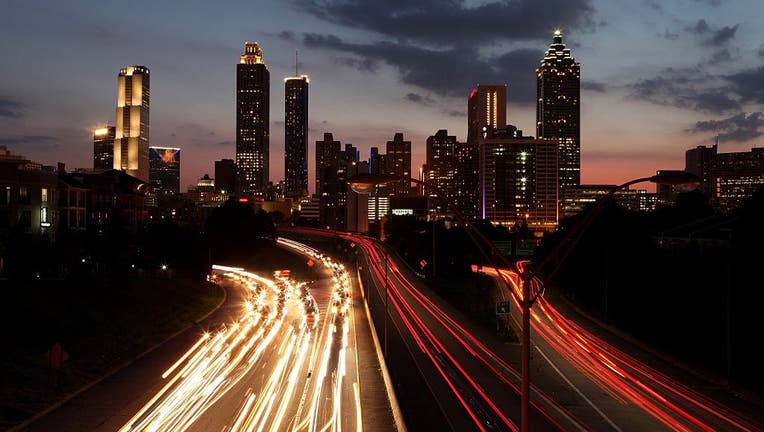Report: Atlanta among cities hardest hit by gentrification, Black displacement

Atlanta skyline at night as photographed from the Jackson Street bridge on July 17, 2015 in Atlanta, Georgia. (Photo By Raymond Boyd/Getty Images) (Getty Images)
ATLANTA - The National Community Reinvestment Coalition (NCRC) has released a new report titled Displaced By Design: Fifty Years of Gentrification and Black Cultural Displacement in U.S. Cities.
What they're saying:
Over the last 50 years, 15% of urban neighborhoods have shown signs of gentrification. While still relatively uncommon, gentrification is on the rise. The number of gentrifying neighborhoods grew from 246 in the 1970s to 1,807 in the 2010s.
By the numbers:
Between 1980 and 2020, 523 majority-Black neighborhoods experienced gentrification. Of those, 155 went through full racial turnover—changing from majority-Black to majority-white. Another 121 became more racially diverse. In total, there are now about 261,000 fewer Black residents in formerly majority-Black, gentrifying neighborhoods. When all gentrifying areas are considered, that number could be closer to 500,000.
Click here for interactive map.
Cities most affected by racial turnover and Black displacement include Washington, D.C., New York City, Philadelphia, New Orleans, Atlanta, and the San Francisco Bay Area.
Atlanta’s Gentrification Impact
Local perspective:
New data from the NCRC shows Atlanta has the second-highest number of census tract flips—neighborhoods that changed from majority-Black to majority-white between 1980 and 2020.
Some of the Atlanta neighborhoods affected include:
- Old Fourth Ward
- East Atlanta
- Reynoldstown
- Kirkwood
- Edgewood
- Grant Park
Although the Old Fourth Ward did not lose as many Black residents as other neighborhoods, the racial shift there was more dramatic. The area saw a sharp rise in its white population after the Eastside Trail of the Beltline opened in 2012, attracting large new apartment complexes built on formerly vacant industrial land.
From 1980 to 2020, Atlanta lost about 22,000 Black residents—the fifth-highest loss among U.S. metro areas.
According to the report, Atlanta had the most intense gentrification in the country from 2000 to 2012. The NCRC measures gentrification by tracking increases in income levels, property values, and college-educated residents.
Washington, D.C., experienced the highest racial turnover overall. While cities like Los Angeles and Newark lost more majority-Black neighborhoods than Atlanta, many of those areas became majority-Hispanic or racially mixed rather than majority-white.
Pros and Cons of Gentrification
Dig deeper:
Here’s a look at the potential benefits and drawbacks of gentrification, a process that continues to reshape urban communities across the U.S.
Pros of Gentrification
1. Economic Revitalization
- Gentrification often brings new investment to neighborhoods, leading to improved infrastructure, increased business activity, and rising property values.
2. Reduced Crime Rates
- As investment increases and community resources improve, many areas see a decline in crime.
3. Improved Public Services and Amenities
- Revitalized neighborhoods may benefit from better schools, parks, transit, and healthcare services due to a higher tax base.
4. Increased Property Values
- Homeowners may benefit from increased equity and resale value.
5. Diversification of Neighborhoods
Some view gentrification as a way to promote racial and economic integration in historically segregated communities.
Cons of Gentrification
1. Displacement of Longtime Residents
- Rising rents and property taxes often force out lower-income residents and communities of color, leading to cultural displacement.
2. Loss of Cultural Identity
- Gentrification can erode the historical and cultural fabric of a neighborhood as new, wealthier residents reshape the community.
3. Widening Inequality
- Benefits often accrue to wealthier newcomers, while longtime residents may not see the same gains—or may suffer setbacks.
4. Increased Cost of Living
- As neighborhoods gentrify, the overall cost of living (groceries, services, retail) can rise, straining long-term residents.
5. Community Tensions
- Social friction can increase between new and existing residents due to differing expectations, norms, and priorities.
SOURCES

